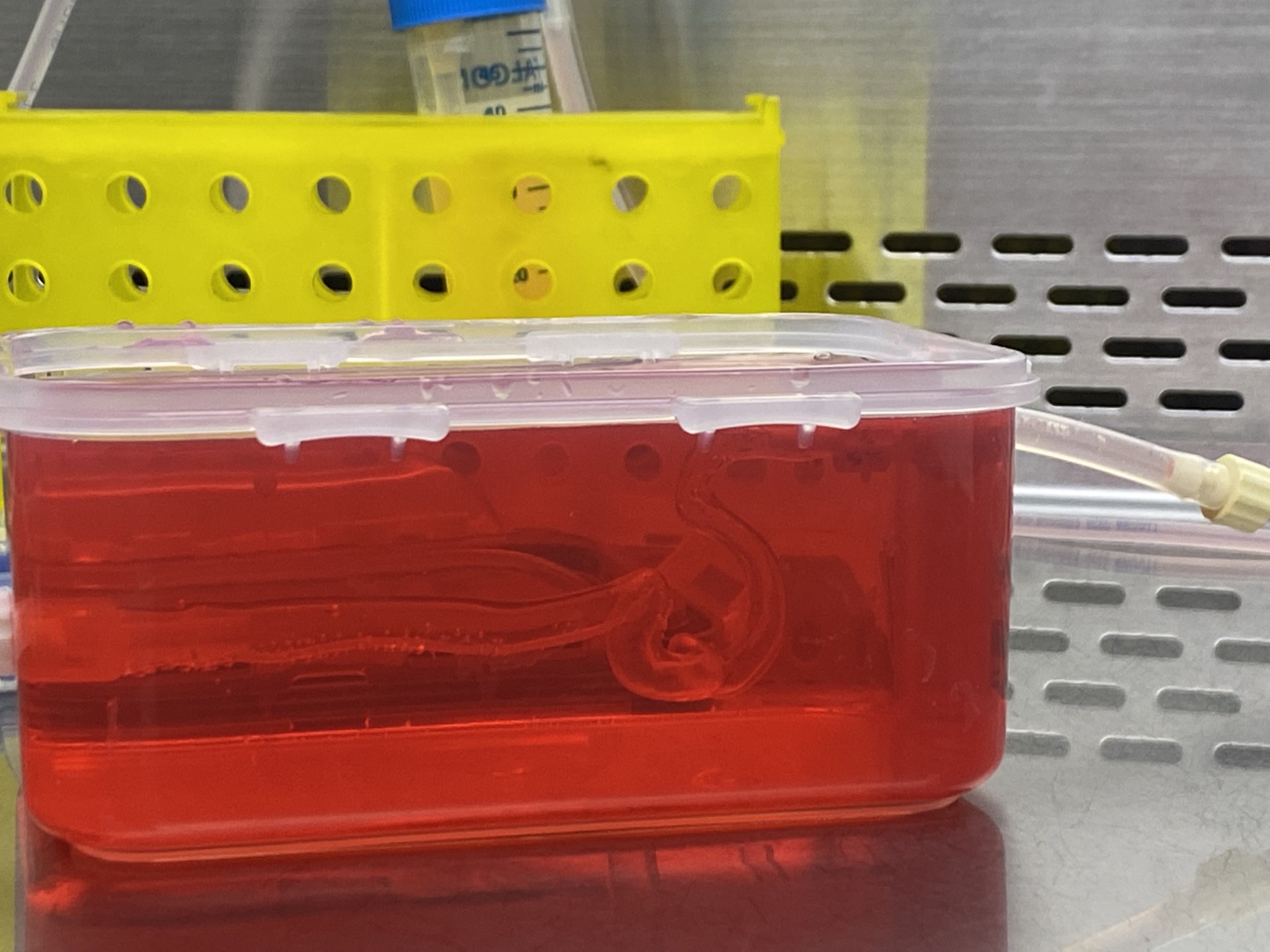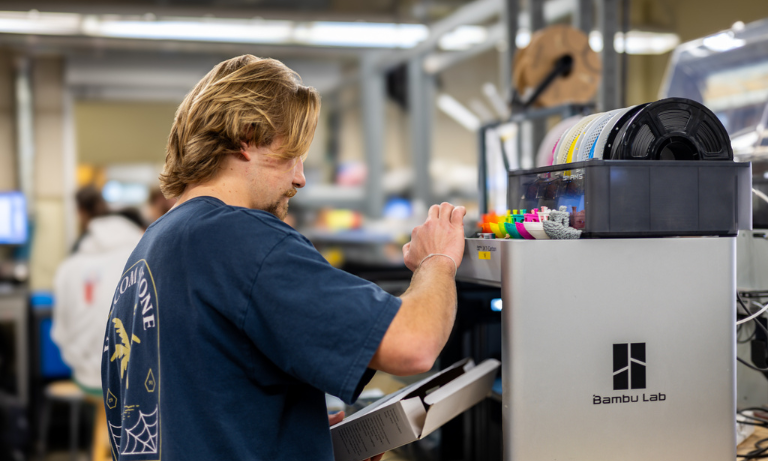Two biomedical engineering students working with Professor Kristen O’Halloran Cardinal dramatically increased the production of lab-grown blood vessels on campus, enabling industry partners to test a larger number of medical devices in the Tissue Engineering Lab.
Student leads and recent graduates Harrison Oen of Issaquah, Washington, and Isabelle Starr of Hood River, Oregon, documented the journey to this milestone achievement.
Cardinal’s lab has collaborated with industry partners for many years, and recently the scale of these studies has increased. One company, partnering with Cardinal’s lab, requested 20 lab-grown vessels to test neurovascular devices like flow diverters and thrombectomy devices. Their goal is to improve the safety of these interventions for patients with vascular conditions without relying entirely on animal testing.
“I have to admit, when we realized we would have to grow 20 blood vessels at once, it was daunting since we had only ever grown three at a time,” Oen said.
The process started with endothelial cells from discarded umbilical veins, which were cultured in 60 flasks. On the setup day, bioreactors and scaffolds were sterilized, protein-coated and mounted. The cells were then seeded onto the scaffolds and connected to pumps that provided nutrients for growth.
After 16 hours, Oen and Starr sent photo proof to Cardinal that they had completed the task.
“Coming out on the other end, we were feeling accomplished,” Starr said, as Cardinal pulled up the photo showing Oen and Starr beaming with pride. “This work involves constant problem-solving, and we successfully tackled the challenge.”
Although Oen and Starr are leaving campus, their pioneering work has left a legacy, transforming the lab’s capabilities and setting a new standard for future projects.

The ability to grow this many silicone-based blood vessels at once allowed Cardinal to host visiting physicians on campus for the first time in her 17 years of working with blood vessel mimics. This capability enabled them to complete testing within just one or two days.
“As soon as we grew 20 vessels in a single setup, that became our new norm and opened a ton of doors,” said Cardinal, noting they now have multiple industry contracts.
During physician and industry visits, medical devices were deployed in the developed vessels, providing critical feedback on the devices’ performance and uniquely positioning Cal Poly as a leader in blood vessel mimic testing.
By using lab-grown blood vessels, researchers can evaluate devices before progressing to tests on rabbits or pigs. While mimics may not replace animal testing, they can significantly reduce the number of necessary studies.
Oen and Starr joined the lab because they share their professor’s passion for using the mimics as a bridge between benchtop research and animal studies. They were also motivated by the potential to help patients, knowing their work would impact the medical field.
The arrival of medical professionals to test devices using their models was the culmination of the journey Oen and Starr began when they moved into the role of student leads in 2022.
“We were in the lab watching the physician deploy the device, and I remember thinking that this exact procedure would be used on an actual patient. It really put things in perspective,” he said.

Throughout his four years as an undergraduate, Oen was an integral and dedicated member of Cardinal’s lab, motivated by its focus on improving patient care – a goal he hopes to achieve after finishing medical school at Rocky Vista University in Colorado. During our interview about the blood vessel project, he shared the news of his acceptance to Rocky Vista University with Cardinal, who clearly takes pride in her students’ success.
Starr completed her graduate studies at Cal Poly this spring and is on her way to Seattle, Washington, where she will monitor and manage heart arrhythmias with a collaboration of doctors. Her goal is to work as a clinical specialist engineer in an operating room.
“Coming into Cal Poly, I had heard about tissue engineering and was drawn by the intersection between this field and the more mechanical side of engineering. Working with industry partners and integrating the biological aspect made it an exciting and fulfilling experience for me,” she said.
Oen and Starr trained the next student leads before departing campus to ensure a seamless transition.
“Everyone in this lab is passionate about what they do; they love it so much,” Starr said, “and that passion gets passed down.”
Cardinal said her team will begin the fall by testing a new type of neurovascular device, continuing their march toward the larger goal of creating simple and scalable models for companies.
She mentioned with a big smile that she might reach out to Starr and Oen for their insights gained from countless hours in the tissue engineering lab, and they seemed more than happy to oblige.
“Working in the lab was one of my most exciting fun times at Cal Poly,” Oen said. “Being part of a great team with instrumental mentorship made me happy and proud to be involved.”
By Emily Slater


